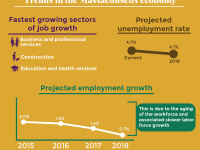Arlene Ash, Professor and Division Chief, Biostatistics and Health Services Research, at UMass Medical School, has compiled a useful series of original thoughts, emails, and links about Ebola which I am broadcasting and reposting on my blog site here.
This posting repeats some of the information already posted in my earlier blog:
The original article by Kas Nwuke is now linked (with permission) as a pdf and includes linked references on my web site. (It is 6 pages – updated to include two pages of references.)
Containing Ebola: A success story from an “unexpected” place?
From Arlene Ash:
Friends and Colleagues,
Here’s what I [Arlene Ash] sent previously with some updates.
I now have Mead Over’s permission to circulate his text that is included below, plus sharing the link to his Twitter log: @MeadOver.
Also, I have added the text from yesterday’s NYT editorial “Cuba’s Impressive Role on Ebola,” since non-subscribers may not be able to get it themselves on-line. The full text, with links and commentary, is very interesting, and I think important.
These are, indeed, extraordinary times – and, I firmly believe, they offer an extraordinary opportunity to discard old, dysfunctional paradigms – if only we can seize it.
Arlene
_
Last weekend I [Arlene Ash] wrote:
Re-envisioning Ebola as an opportunity
Friends, If you like this idea as well as I do, perhaps you can help make it “go viral.”
- I believe it would be cheaper to stop Ebola in Africa than to try to seal our borders against it as it spreads unchecked.
- I believe that taking a leadership role in stopping Ebola would do a great deal for our self-esteem as a nation, and for our regard in the world.
- I believe that cost-effectiveness calculations could make a strong case for a “war on Ebola” as the best kind of war that we could wage. I propose we could do more to combat ISIS and protect America by working with the world community to prevent the spread of Ebola in Africa than by any level of commitment of troops and weapons to the enflamed Middle East.
I want America to re-envision Ebola as an opportunity to demonstrate what great things we can do when we bend ourselves to the task.
Of course we are all busy, but perhaps it takes only a little help from many people to spread a really good idea.
Thought for the day. Please grow it and pass it along.
_
I got back some very interesting feedback which I would like to share:
From Randy Ellis (a success story in Nigeria, with lessons for the rest of the world):
Amid so much negative and scary news about Ebola, this research paper on the experience of Nigeria where it has not spread widely after arriving by airplane gives great hope. I recommend it if you have time (It is 6 pages).
Containing Ebola: A success story from an “unexpected” place? [Now linked instead of attached as a pdf]
The author, Kasirim Nwuke is a BU Ph.D. Here is his bio from one web site.
http://www.elearning-africa.com/profiles/profile_popup.php?address_id=595692&lang=4
_
Then a follow-on from Mead Over, author of a World Bank report (Twitter log @MeadOver):
This is indeed a good story with details that go beyond the information our World Bank report (in the box on page 29) on the efforts of Senegal and Nigeria that I co-authored on October 7 and blogged on Friday:
http://www.cgdev.org/blog/understanding-world-banks-estimate-economic-damage-ebola-west-africa
http://documents.worldbank.org/curated/en/2014/10/20270083/economic-impact-2014-ebola-epidemic-short-medium-term-estimates-west-africa
The box on page 29 of the WB report was requested by JYK after he sat next to Goodluck Jonathan at the UNGA meeting last week and President Jonathan told him that 1,000 Nigerian public health workers were involved in the contact tracing including almost 300 Nigerian doctors. This is remarkable not only for the level of effort, but also in comparison to Liberia, Sierra Leone and Guinea each of which had fewer than 100 doctors before the crisis. In Nigeria I have heard that the polio eradication workers are the ones who were redeployed to do the Ebola contact tracing. Other countries don’t have the polio program because they don’t have polio. So even a relatively wealthy country like Ghana may have trouble emulating Nigeria’s success.
I like the point made in the article that Nigeria showed courage in announcing the danger far and wide and rolling out a massive public health effort to contain it. This was before the rest of the world was taking the epidemic as seriously as they are today, and thus the measures could well have been opposed by economic interests. (Parallel to HIV: In the early days of the HIV epidemic, business interests in Thailand opposed the admission that HIV was a problem. In “Confronting AIDS” we attribute Thailand’s energetic and remarkably successful “100% condom program” partly to the fact that the country was under a military dictatorship for 6 months and the “benevolent dictator” saw the wisdom of opposing the economic interests in order to start that program.)
When I spoke on Ebola at American University the other evening, one of the other panelists was an anthropologist who had recently returned from Sierra Leone. She also reported the “Ebola handshake” and other “self-isolation behavior from that country. Epidemiologists are hoping that such behavior, developing in response to the news and the public information campaign, will reduce the reproductive rate of the epidemic. But we have not seen a deceleration in Liberia or Sierra Leone yet.
Another implication of the author’s account and of the Nigerian and Senegalese public health expenditure amounts reported in the box of the World Bank report is that several West African countries are increasing government spending in response to the outbreak (as is the US). Our World Bank report does not include the possible stimulus effect of this spending on national economies. This spending may offset some of the reduction in aggregate demand due to aversion behavior, and thus reduce the economic impact below our estimates. However, as I say at the end of my blog, unless the epidemic begins to decelerate soon, our “High Ebola” estimate may fall short of estimating the total impact. And I hope that when Charles Kenny and I join CDC and others in asserting this is still a small problem inside the US, we are not being overly optimistic. As here:
https://www.youtube.com/watch?v=_jCWkDYwN2g; https://www.youtube.com/watch?v=113kLL3pZQQ
One frustrating aspect of the report by Kasirim Nwuke is the lack of references or hyperlinks [AA: they are now attached in a separate file.] Even our World Bank report did better. I agree totally with his conclusion that Nigeria is not yet “safe”. Each day is another roll of the dice. In one sense, Nigeria was lucky that they detected the first case on entry. Next time they may not be so lucky.
_
In response, Kas Nwuke KNwuke@uneca.org wrote (on 10/18/14):
Going through the materials, I have come to know that Nigeria's preparations started much earlier. It started once the outbreak in Guinea and reached full steam after the July ECOWAS Heads of State Summit. That Summit discussed Ebola in the sub-region and resolved that member States of ECOWAS should be prepared to contain it. Nigeria according to the Health Minister made, after the Summit, the very first financial donation of $3.5 million US to the three countries. Back home, the Health Minister briefed the Commissioners for Health in the 36 States of the Federation and asked for increased vigilance.
You will find this additional information in the references.
In my essay, I had given the number of Nigerians who have volunteered to go to Liberia and Sierra Leone as 200. I have since learned that the number is actually 591. In addition, Nigeria is also providing crash courses to health personnel from the three most affected countries.
I am sure that lots more will be written about Nigeria experience. I hope that the lesson can be of value to resource constrained countries on how to handle/tackle epidemics in the future.
(I must with regret inform you that Nigeria's election politics has now entered the Ebola debate. Rivers State and Lagos State are controlled by the opposition. Electioneering campaign for next year's election has started and the ruling PDP and the opposition APC is each seeking to claim credit for the success in containing the spread of Ebola. The Rivers State Governor has just disclosed - see the hyperlink - that the state spent N1.106 billion - more than $6 million - to tackle Ebola.)
With best wishes,
Kas
-
Also, some inspiring information about a UMass colleague (Steven Hatch) now in Liberia:
http://www.nytimes.com/2014/10/17/world/africa/pursuing-a-calling-that-leads-to-west-africa.html
http://www.nytimes.com/2014/10/17/world/africa/ebola-liberia-west-africa-epidemic.html
and a NYT “conspicuous success story” about Senegal, that points to the so far very positive Nigerian experience as well.
-
Also,
NYT, October 19 Op-Ed: “Cuba’s Impressive Role on Ebola” (http://www.nytimes.com/2014/10/20/opinion/cubas-impressive-role-on-ebola.html?_r=0)
Cuba is an impoverished island that remains largely cut off from the world and lies about 4,500 miles from the West African nations where Ebola is spreading at an alarming rate. Yet, having pledged to deploy hundreds of medical professionals to the front lines of the pandemic, Cuba stands to play the most robust role among the nations seeking to contain the virus.
Cuba’s contribution is doubtlessly meant at least in part to bolster its beleaguered international standing. Nonetheless, it should be lauded and emulated.
The global panic over Ebola has not brought forth an adequate response from the nations with the most to offer. While the United States and several other wealthy countries have been happy to pledge funds, only Cuba and a few nongovernmental organizations are offering what is most needed: medical professionals in the field.
The Cuban health sector is aware of the risks of taking on dangerous missions. Cuban doctors assumed the lead role in treating cholera patients in the aftermath of Haiti’s earthquake in 2010. Some returned home sick, and then the island had its first outbreak of cholera in a century. An outbreak of Ebola on the island could pose a far more dangerous risk and increase the odds of a rapid spread in the Western Hemisphere.
Cuba has a long tradition of dispatching doctors and nurses to disaster areas abroad. In the aftermath of Hurricane Katrina in 2005, the Cuban government created a quick-reaction medical corps and offered to send doctors to New Orleans. The United States, unsurprisingly, didn’t take Havana up on that offer. Yet officials in Washington seemed thrilled to learn in recent weeks that Cuba had activated the medical teams for missions in Sierra Leone, Liberia and Guinea.
With technical support from the World Health Organization, the Cuban government trained 460 doctors and nurses on the stringent precautions that must be taken to treat people with the highly contagious virus. The first group of 165 professionals arrived in Sierra Leone in recent days. José Luis Di Fabio, the World Health Organization’s representative in Havana, said Cuban medics were uniquely suited for the mission because many had already worked in Africa. “Cuba has very competent medical professionals,” said Mr. Di Fabio, who is Uruguayan. Mr. Di Fabio said Cuba’s efforts to aid in health emergencies abroad are stymied by the embargo the United States imposes on the island, which struggles to acquire modern equipment and keep medical shelves adequately stocked.
In a column published over the weekend in Cuba’s state-run newspaper, Granma, Fidel Castro argued that the United States and Cuba must put aside their differences, if only temporarily, to combat a deadly scourge. He’s absolutely right.










